Excerpts from Jim Conrad's
Naturalist Newsletter
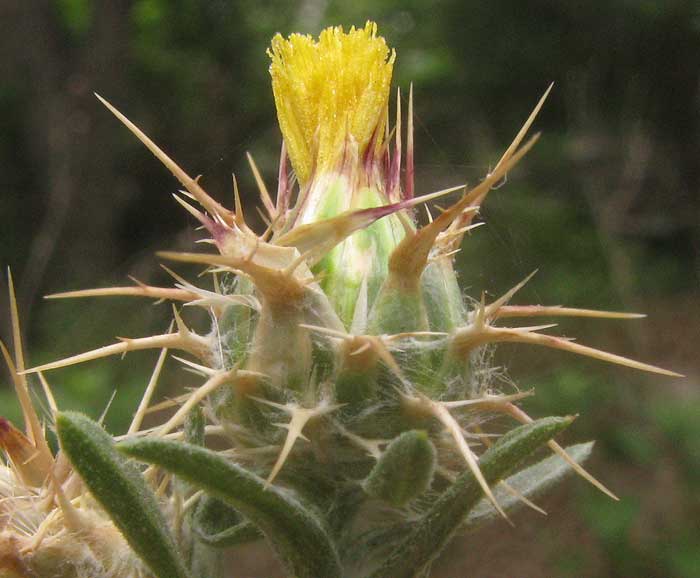
from the May 25, 2014 Newsletter issued from the Frio Canyon Nature Education Center in the valley of the Dry Frio River in northern Uvalde County, southwestern Texas, on the southern border of the Edwards Plateau; elevation ~1750m (~5750 ft); N29.62°, W99.86°; USA
MALTESE STAR-THISTLE
Lined up right beside the little gravel road running down the upper Dry Frio River Valley was a 15-inch high (40cm) row of fairly scrappy-looking, nondescript, even disreputable-seeming weeds, as shown below:
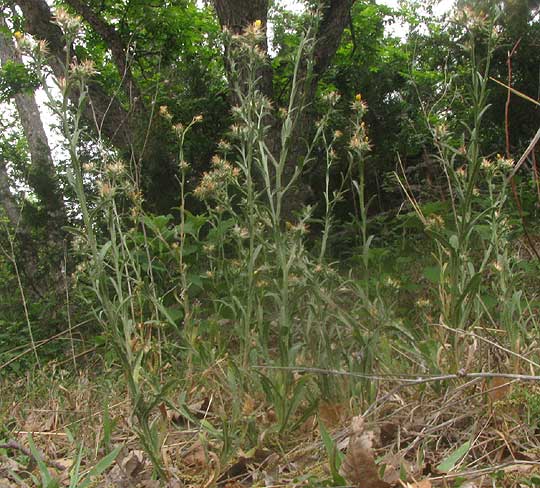
I'd have ignored them, but some bore brightly yellow specks at their tops, so maybe they were flowering. Up close the yellow specks were indeed clusters of tiny, yellow disc flowers emerging from a spectacularly spiny, almost spherical involucre, shown below:
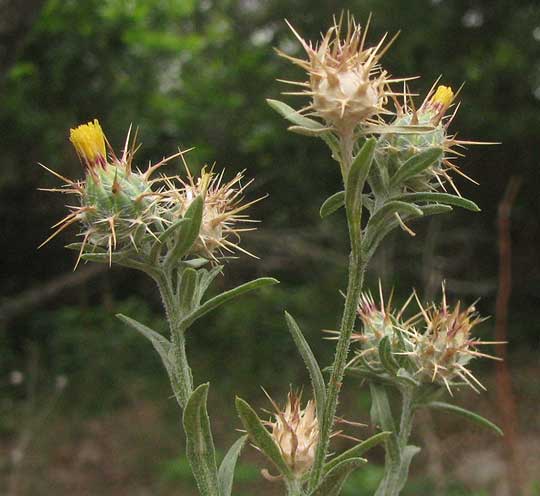
The involucres were only about as wide as a thumbnail, but up close there's something pretty about them, as you can confirm in the flower-head portrait at the top of this page.
With many tiny flowers with yellow corollas arising from the involucre, we know that our plant is a member of the huge Composite or Daisy Family. Below, you can see one disc flower teased from the above head, looking a little like such a flower removed from a Dandelion head (Dandelions are composites):
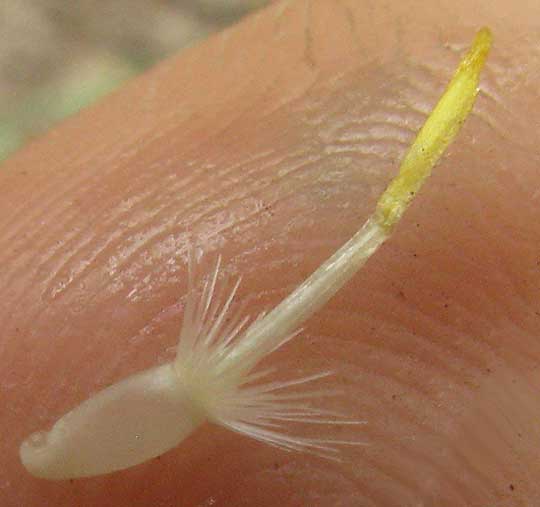
In that picture, the yellow, cylindrical corolla is obvious. The oval, white thing is the future cypsela-type fruit (dry and not splitting at maturity), and the white hairs are the "pappus," which will develop into a "parachute" atop the future fruit, helping the fruit disperse in the wind.
Most of us would guess that with such spines these plants must be a kind of thistle, and they are, though the term "thistle" often is applied to just about any spiny, herbaceous plant. However, a more precise concept of "thistle" is that they are members of the Composite-Family "tribe," the Cynareae. The main thistles in this tribe belong to the genera Cirsium and Carduus, but our roadside plants are not one of those, so here we have a somewhat non-standard thistle. You can believe that better when you realize that these thistles' leaves don't bear spines the way a good thistle should, as demonstrated below:
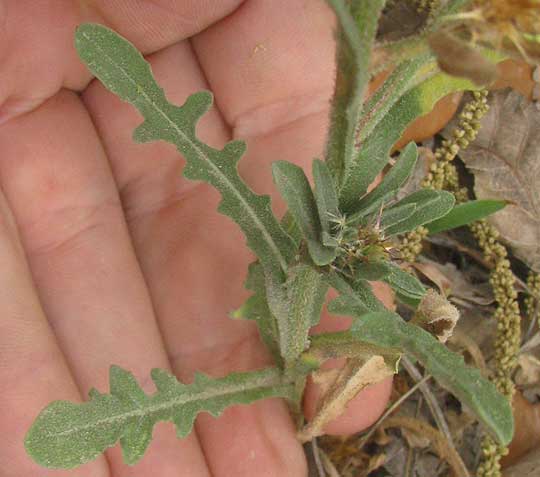
With such great field marks, especially the non-spiny leaves accompanying very spiny flowering heads, it's easy to identify our roadside plants as star-thistles, members of the genus Centaurea. Several star-thistle species can occur in our area, but our yellow-flowered ones can only be one of two species, both species known as Yellow Star-thistles.
One of those Yellow Star-thistles is Centaurea solstitialis, which during our summer in Oregon in 2009 we got to know very well because they were so abundant and painful to sit on or walk on barefooted. Our page showing that species is at http://www.backyardnature.net/n/h/starthst.htm.
You can see that that the spines of that species' involucres are much longer and slenderer than our current ones. Therefore this is the other yellow-flowered species, sometimes also known as the Tocalote or Maltese Star-thistle, CENTAUREA MELITENSIS.
Both of these Yellow Star-thistle species are native to the Mediterranean region, and both invade disturbed soil in our area. Though our current species could be awful to step on barefooted -- or to bite into if you're a cow -- it's not nearly as aggravating as the one we saw in Oregon, whose spines somehow cause more trouble.